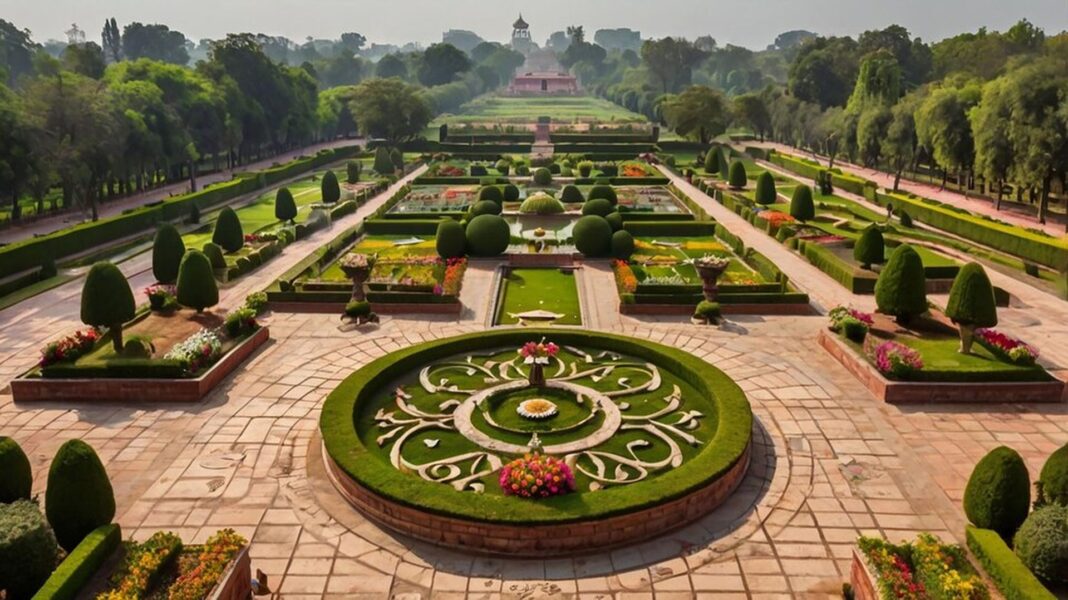Society has traditionally valued royal gardens. They represent royal political and cultural beliefs as well as aesthetic choices. These skillfully designed green areas combine nature’s beauty with human creativity. These gardens show historical power and prosperity via design and upkeep. The stories of each royal garden are unique to their age. The exquisite designs, rich vegetation, and clever arrangements tell much about the rulers and their worldview.
A Historical Perspective On Royal Gardens
Royal gardens date back to ancient civilizations. Early Mesopotamian ziggurats included intricate gardens. Persian gardens, known as „paradise,“ stressed symmetry and nature-architecture integration. Medieval European gardens provided food and medicine. Renaissance gardens were places for relaxation and introspection. The gardens were formal and ordered.
Victoria made major changes. Royals used gardens to express themselves. Exotic flora from occupied regions improved the appearance. Utility gave way to sheer beauty. Royal gardens now combine history and modernity. Landscape architects currently maintain and improve these gorgeous settings. Today, several royal gardens are UNESCO World Heritage sites. Conservation preserves these gardens as historical sites. They inspire gardeners and painters worldwide.
Breathtaking Floral Displays: Nature’s Masterpiece
Royal gardens are known for their beautiful flowers. Visitors and admirers are drawn to these bright outfits. Each season provides fresh hues and scents. Tulips and daffodils bloom in spring, and roses and peonies in summer. Each bloom is meticulously organized and cultivated to create a year-round marvel. These gardens‘ floral arrangements show horticulturists‘ talent. They arrange flowers to match their environment.
Plant placement is deliberate. This precise coordination maximizes aesthetics. The flowing patterns and vivid hues captivate visitors. The contrast of blossoming flowers and lush vegetation is stunning. The gardens change again each October. Foliage becomes gold and scarlet. Winter is calmer, but evergreens still have a stark beauty.
Gardening has improved. Modern technology improves royal gardens‘ development and display. Advanced irrigation systems keep flowers healthy and bright. These gardens‘ beauty comes from ongoing maintenance and improvement. The dynamic show captivates visitors.
The Symbolism Behind Royal Garden Designs
Royal gardens have importance and symbolism beyond beauty. Layout patterns frequently show order and control. Straight lines symbolize stability and authority, while circular shapes depict the royal life cycle. Water features are common in royal gardens. Water represents continuity and vitality, promoting wealth. These gardens use symbolic plants. Herbs may represent healing, while rare flowers represent riches and grandeur.
Ancient civilizations revered gardens. They symbolized nature-human harmony as microcosms of the cosmos. Asian-inspired gardens emphasize peace and meditation. They emphasize natural elements and simplicity. Gardens may symbolize triumph, conquest, or divine favour in Western cultures. Space-integrated statues, fountains, and constructions have significance. These features generally honour monarchs or myths.
Garden symbolism teaches tourists. Each avenue leads to a better comprehension of history. Monarchy beliefs and goals influence plant, colour, and design choices. These gardens reflect power’s values across decades.
How Garden Design Reflects Monarchy Values
Gardens are meticulously designed to mirror monarchy principles. A garden reflects the royal family’s values. These places reflect monarchs‘ ideologies via creativity. Innovative designs may demonstrate progressive ideals like change and adaptability. In contrast, classic designs represent history and tradition.
Royal gardens promote nationalism. Indigenous flora show a link to the land and culture. Public pride may result from this link. The gardens‘ pavilions and monuments celebrate historical personalities and events. Visitors are reminded of the monarchy’s accomplishments. Garden maintenance promotes dedication and persistence.
Environmentalism is growing in importance. Many royal gardens prioritize sustainability. This indicates a movement toward accountability and conservation. The use of native species increases biodiversity and ecological awareness. Visitors‘ experiences in these gardens reflect the royal family’s aim to engage the people. Open events may build community in these settings.
Seasonal Changes In Royal Garden Landscapes
Royal gardens change dramatically year-round. Each season gives new hues and textures to the environment. When flowers blossom in spring, life and vigour return, visitors may see stunning tulips and daffodils.
Summer brings luxuriant vegetation and foliage. Warm weather promotes plant growth, producing a beautiful tapestry. The air is filled with the scent of roses, hydrangeas, and other flowers in full bloom. Events throughout this season attract people seeking leisure in nature.
Autumn warms the gardens. The foliage becomes orange, crimson, and yellow, creating a stunning display. This seasonal change allows time for introspection as the gardens prepare for winter. Falling leaves and cool air create a peaceful atmosphere.
Winter changes the scene again. Evergreen trees dominate, bringing balance and stability. The stark beauty of naked trees and iced flora calms. Seasonal changes enhance royal gardens and invoke nostalgia and regeneration.
An Insider’s Guide To Rare Plant Species
Rare plants in royal gardens captivate tourists. These gardens protect rare flora. The biodiversity-focused selection of these plants is purposeful. Unique types from different places contribute to the garden’s attractiveness.
Many royal gardens pursue conservation. They raise endangered animals in regulated conditions. Future generations may enjoy these unique plants because of this devotion. Visitors may learn about these rare species‘ origins and traits during guided excursions.
Rare plant cultivation demands expertise. Horticulturists strive to optimize growth. Greenhouses and excellent propagation procedures preserve these rare kinds. These activities rely on education. The value of gardens in conserving plant variety may be explained to visitors.
Discovering these gardens might inspire. Learn about uncommon plants to appreciate nature’s beauty and complexity. Rare species show how fragile ecosystems are. Royal gardens display this flora and encourage conservation.
What Is The Historical Significance Of Royal Gardens?
Royal gardens are historically significant. They represent their era’s culture, morals, and aesthetics. Gardens have been used for functionality and beauty since prehistoric times. Luxury, introspection, and power were generally their goals.
Throughout history, these gardens responded to social developments. Medieval gardens emphasized agriculture and medicine. The Renaissance emphasized attractive landscapes as symbols of prosperity. Royal gardens hosted social events, demonstrating the monarch’s rank. Many royal gardens are now cultural heritage monuments, highlighting their role in history.
Are Royal Gardens Open To The Public?
Royal gardens are accessible based on location and restrictions. Many royal gardens across the globe welcome tourists to appreciate their splendour. Some gardens provide guided tours or regular activities that explain their history.
Some places are only open during particular seasons. Seasonal events draw crowds, while some limit admission. If appropriate, admission fees help preserve these cherished landscapes. Visitors should verify hours and activities ahead of time. Openness enhances appreciation of these exquisite gardens‘ art and history.



